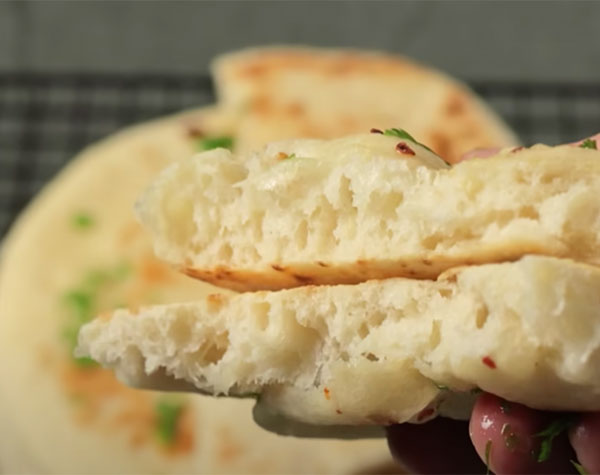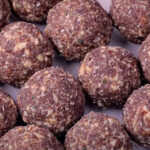
Ragi Ladoo
August 31, 2024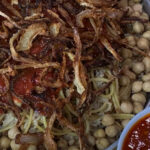
Egyptian Koshary
September 4, 2024
Ragi Ladoo
August 31, 2024
Egyptian Koshary
September 4, 2024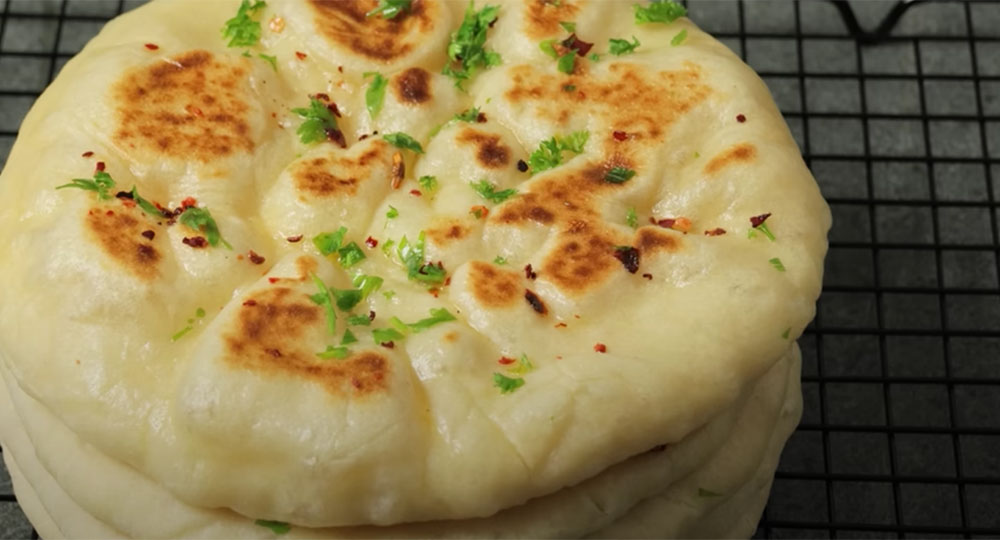
Bazlama
A Versatile and Satisfying Vegetarian Meal
Bazlama, a beloved type of Turkish flatbread, is a versatile and hearty dish that holds a special place in the hearts of many. Unlike some other types of flatbread that require elaborate baking techniques or specialized ovens, bazlama is cooked simply in a pan, making it accessible to anyone with basic kitchen equipment. This flatbread not only serves as a staple in Turkish cuisine but also offers a perfect foundation for a vegetarian meal, especially when paired with flavorful vegetarian curries like sambar.
1h 30 Mins
Easy
Serves 6
A Perfect Vegetarian Meal
Bazlama is a versatile bread that can be enjoyed in numerous ways, making it an excellent choice for vegetarians. Its mild flavor and soft texture pair wonderfully with a variety of vegetarian dishes. One popular way to enjoy bazlama is by serving it alongside vegetarian curries, such as sambar.
Sambar, a lentil-based curry from South India, is rich with the flavors of tamarind, mustard seeds, curry leaves, and an assortment of vegetables. When served with bazlama, the bread acts as the perfect vehicle for soaking up the aromatic, tangy, and spicy notes of the curry. The combination is not only satisfying but also nutritionally balanced, providing a wholesome meal that is both filling and flavorful.
Cooking Method: Simplicity in a Pan
One of the defining features of bazlama is its straightforward cooking method. The dough, made from basic ingredients like flour, yeast, water, and salt, is kneaded until smooth and left to rise until it doubles in size. Once ready, the dough is divided into smaller portions, rolled out into thick, round discs, and cooked in a hot pan or griddle. The bread puffs up beautifully as it cooks, developing a golden-brown, slightly crisp exterior while remaining soft and pillowy on the inside.
The pan-cooking method of bazlama not only makes it easy to prepare but also lends the bread a unique texture and flavor. The slight charring from the hot pan adds a hint of smokiness, while the softness of the bread makes it an ideal accompaniment to various dishes.
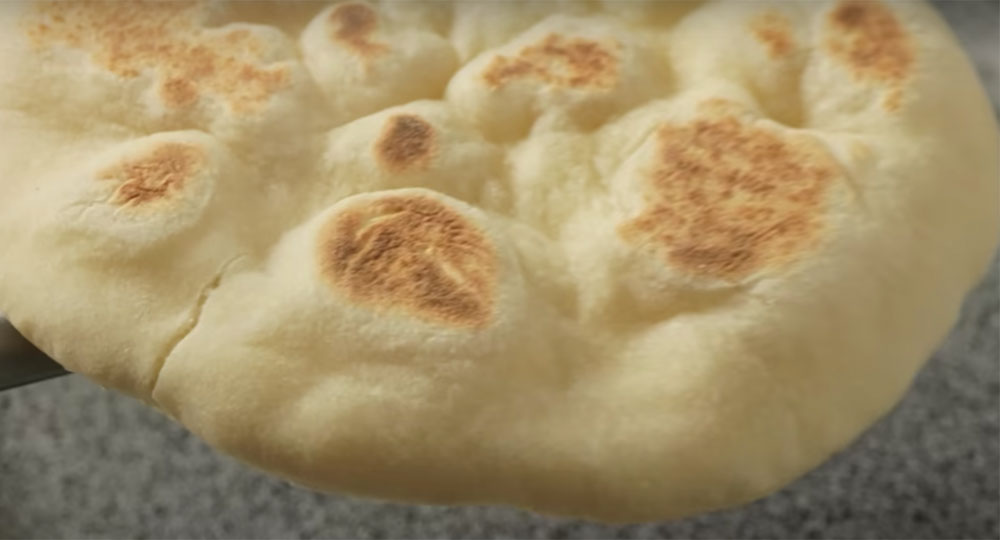
Turkish Flatbread (Bazlama)
Cultural Significance and Modern Appeal
Bazlama holds a cherished place in Turkish culinary traditions. It is often prepared in rural areas, where it serves as a daily bread, baked fresh and enjoyed by families with their meals. The simplicity of bazlama, combined with its ability to complement a wide range of dishes, has also made it popular beyond Turkey's borders.
In recent years, bazlama has gained attention in vegetarian and vegan communities worldwide, thanks to its plant-based ingredients and versatility. Whether enjoyed with dips like hummus, used as a wrap for grilled vegetables, or paired with rich curries, bazlama offers a satisfying and adaptable option for those seeking delicious vegetarian meals.
Nutritions of Turkish Flatbread (Bazlama)
Turkish flatbread, particularly Bazlama, is not only delicious but also offers a range of nutrients. The exact nutritional content can vary based on the recipe and portion size, but here’s a general overview of the nutritional profile of Bazlama:
Typical Nutritional Values for Bazlama (per 100 grams)
- Calories: Approximately 230-270 kcal
- Carbohydrates: 45-50 grams
- Dietary Fiber: 2-4 grams
- Sugars: 0-2 grams
- Protein: 7-9 grams
- Fat: 2-4 grams
- Saturated Fat: 0.3-0.5 grams
- Sodium: 400-500 milligrams
- Calcium: 10-15 milligrams
- Iron: 1.5-2 milligrams
Nutritional Breakdown
-
Carbohydrates:
- Energy Source: Bazlama is rich in carbohydrates, making it a good source of energy. The high carb content is typical of bread products, providing fuel for daily activities.
-
Protein:
- Plant-Based Protein: With 7-9 grams of protein per 100 grams, Bazlama can contribute to your daily protein needs, especially for vegetarians.
-
Fats:
- Low in Fat: Bazlama is generally low in fat, with only a small amount of saturated fat. This makes it a heart-healthy choice when consumed in moderation.
-
Fiber:
- Digestive Health: The dietary fiber content in Bazlama helps in maintaining good digestive health. Fiber also contributes to a feeling of fullness, which can be beneficial for weight management.
-
Vitamins and Minerals:
- Micronutrients: While not a rich source of vitamins and minerals, Bazlama does contain small amounts of calcium and iron, which are essential for bone health and oxygen transport in the body, respectively.
-
Sodium:
- Moderate Sodium Content: Bazlama has a moderate amount of sodium, which is something to watch for if you're managing sodium intake, especially in store-bought or commercially prepared versions.
Considerations
- Portion Control: Because Bazlama can be quite filling, it’s important to consider portion size, especially if you are managing your carbohydrate intake or are on a calorie-restricted diet.
- Pairing: To create a balanced meal, pair Bazlama with protein-rich foods, vegetables, and healthy fats. For instance, pairing it with vegetarian curries like sambar adds not only flavor but also additional nutrients like protein and fiber from the lentils and vegetables.
Overall, Bazlama is a nutritious and versatile flatbread that can be part of a balanced diet when consumed in appropriate portions.
Conclusion
Turkish flatbread, bazlama, exemplifies the beauty of simple, home-cooked food. Cooked in a pan, this soft, airy bread is a delightful addition to any meal, particularly when served with vegetarian curries like sambar. Its ease of preparation and ability to enhance the flavors of accompanying dishes make bazlama a staple not just in Turkish cuisine, but also in vegetarian cooking worldwide. As more people discover the pleasures of bazlama, it continues to grow in popularity, proving that sometimes, the simplest dishes are the most satisfying.
How to cook "Turkish Flatbread (Bazlama) at home?
Cooking Turkish flatbread, or Bazlama, at home is a rewarding and straightforward process. Below is a step-by-step recipe to make Bazlama from scratch.
Ingredients:
- 4 cups all-purpose flour
- 1 packet (2 ¼ tsp) active dry yeast
- 1 teaspoon sugar
- 1 teaspoon salt
- 1 ½ cups warm water (about 110°F or 45°C)
- 1/2 cup plain yogurt (optional, for extra softness)
- 2 tablespoons olive oil or vegetable oil
Preparation Steps:
1. Prepare the Dough:
- Activate the Yeast: In a small bowl, combine warm water, sugar, and yeast. Stir lightly and let it sit for about 5-10 minutes until the mixture becomes frothy, indicating that the yeast is active.
- Mix the Dry Ingredients: In a large mixing bowl, combine the flour and salt.
- Combine Wet and Dry Ingredients: Make a well in the center of the flour mixture, then add the yeast mixture, yogurt, and oil. Mix everything together until a rough dough forms.
2. Knead the Dough:
- Kneading: Turn the dough out onto a lightly floured surface and knead for about 8-10 minutes until the dough is smooth and elastic. You can also use a stand mixer with a dough hook attachment for this step.
- First Rise: Place the kneaded dough in a lightly oiled bowl, cover it with a clean kitchen towel or plastic wrap, and let it rise in a warm place for about 1-1.5 hours, or until it has doubled in size.
3. Shape the Dough:
- Divide the Dough: Once the dough has risen, punch it down to release any air bubbles. Divide the dough into 6-8 equal portions, depending on the size you want your Bazlama to be.
- Shape the Discs: Roll each portion into a ball, then use a rolling pin to flatten each ball into a round disc, about 1/4 inch thick.
4. Cook the Bazlama:
- Heat the Pan: Preheat a large, non-stick skillet or griddle over medium heat.
- Cook the Flatbread: Place one of the dough discs in the heated skillet. Cook for about 2-3 minutes on one side until bubbles start to form and the underside is golden brown. Flip and cook the other side for another 2-3 minutes until golden and cooked through.
- Repeat: Remove the cooked Bazlama from the pan and cover it with a clean towel to keep it warm. Repeat the process with the remaining dough discs.
5. Serve:
- Serving Suggestions: Bazlama is best enjoyed warm. Serve it with dips like hummus or baba ganoush, use it as a wrap for grilled vegetables or falafel, or pair it with a vegetarian curry like sambar for a complete meal.
Tips:
- Resting Time: Allow the dough sufficient time to rise; this will make your Bazlama light and fluffy.
- Pan Temperature: Make sure your skillet is hot before cooking the bread, but not too hot to avoid burning. Adjust the heat as necessary while cooking.
- Optional Toppings: You can brush the warm Bazlama with butter or olive oil and sprinkle with herbs like thyme or sesame seeds for added flavor.
Enjoy your homemade Bazlama, a soft and delicious Turkish flatbread that's perfect for any meal!
